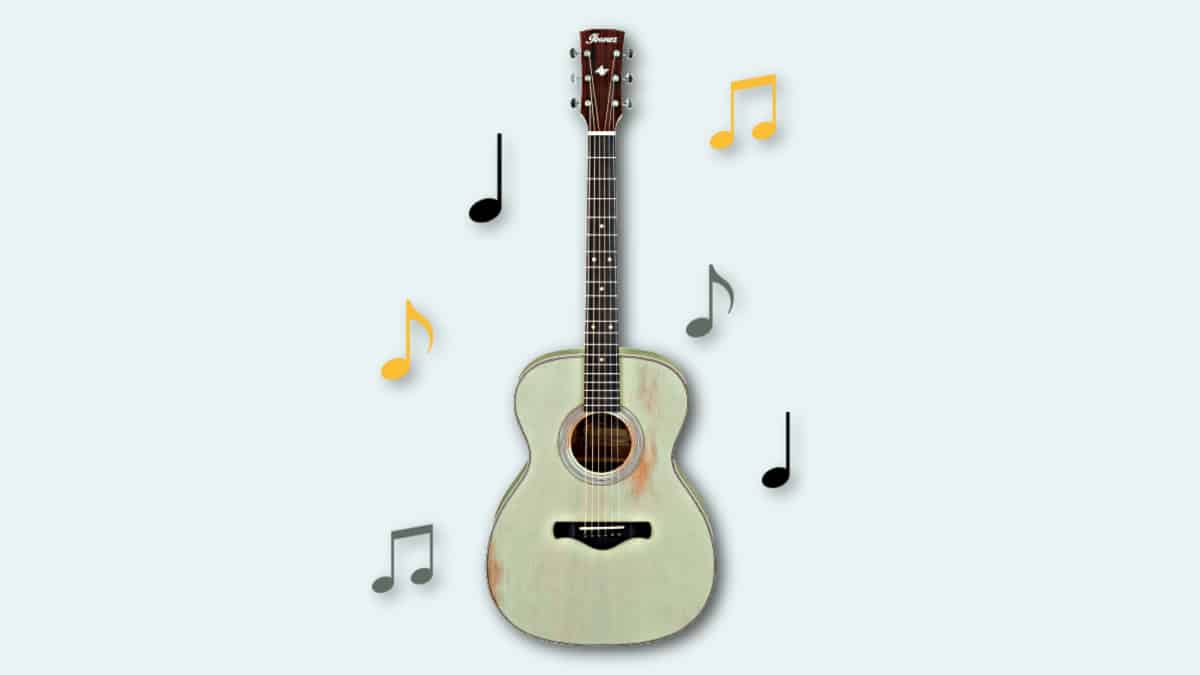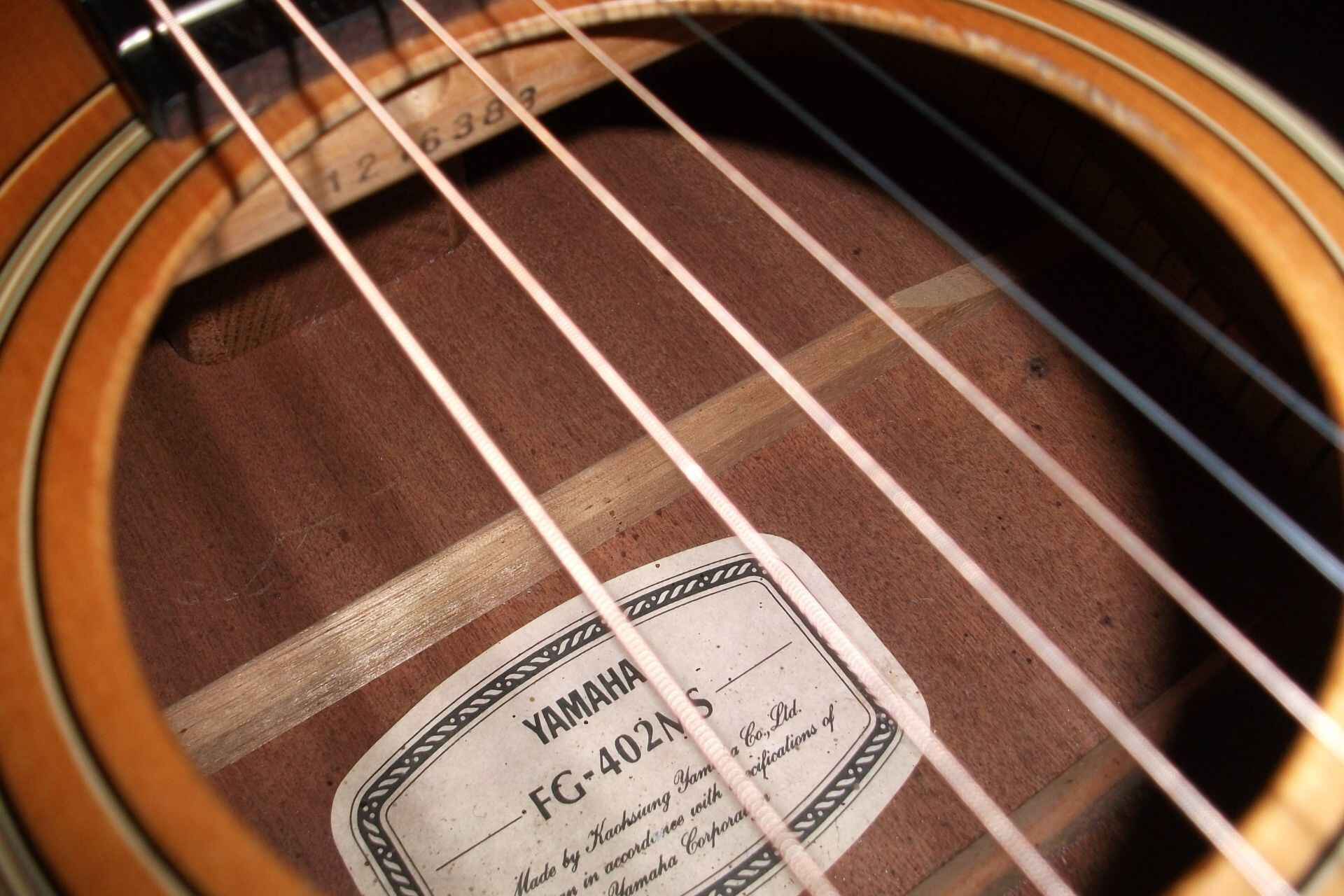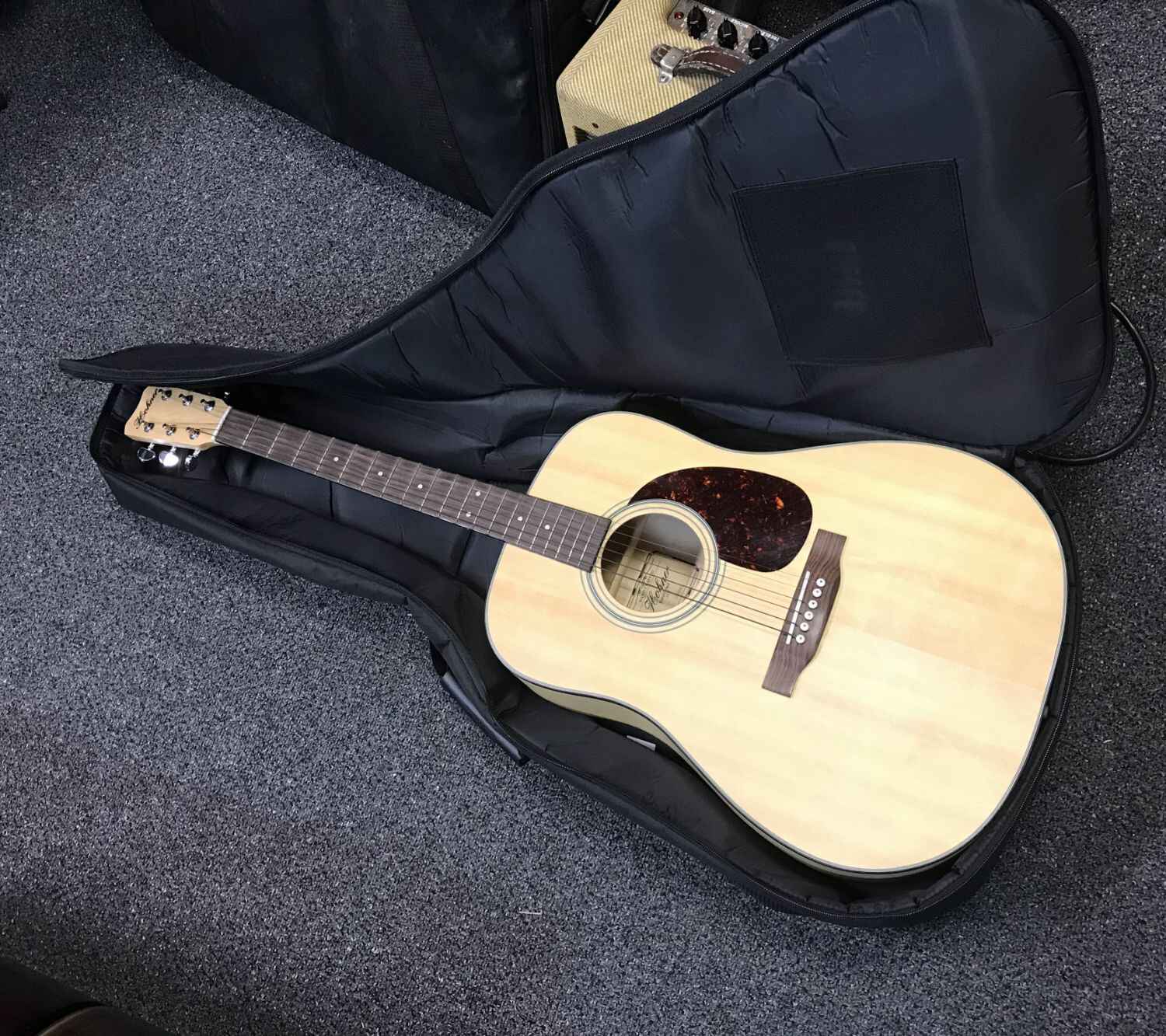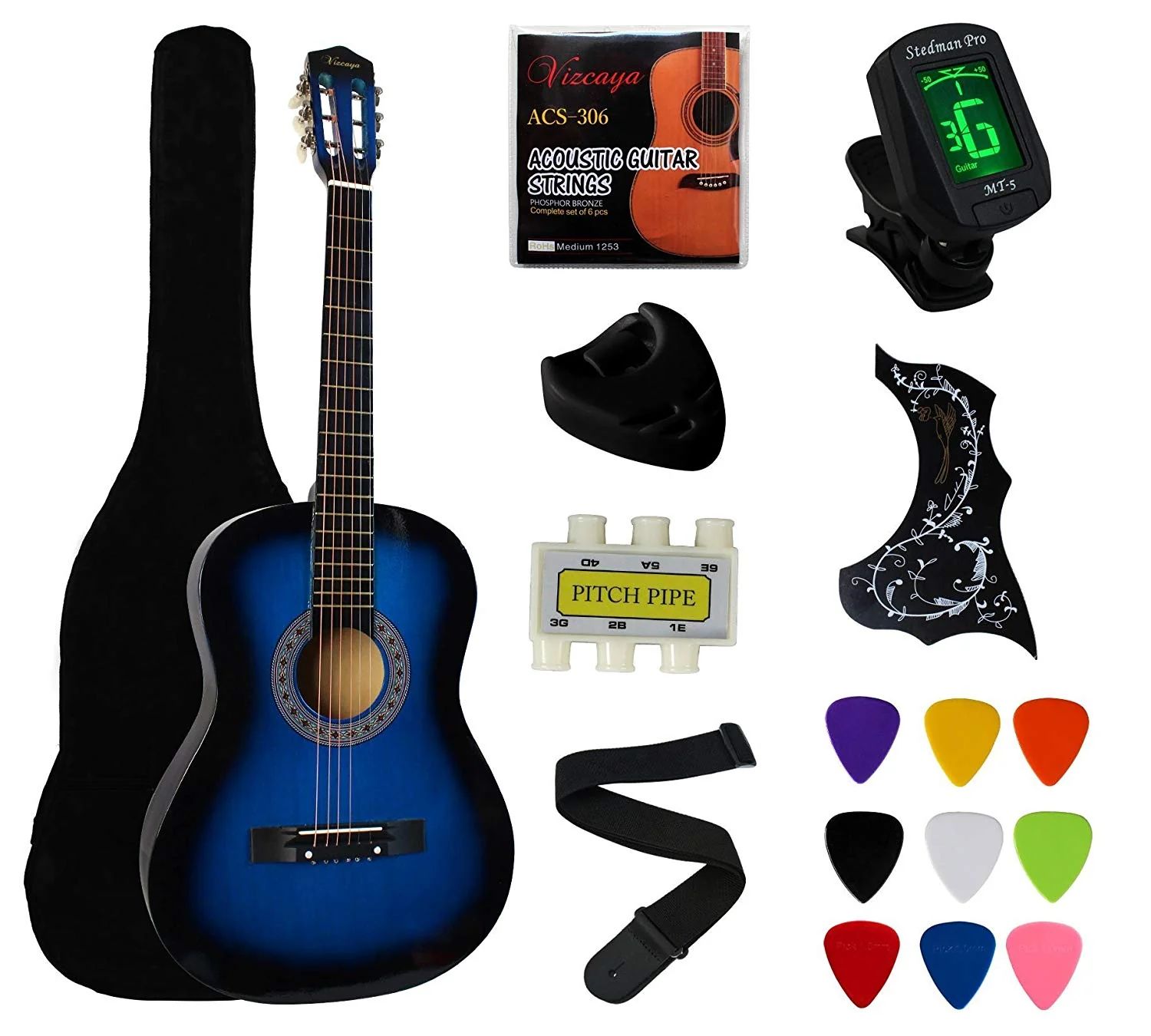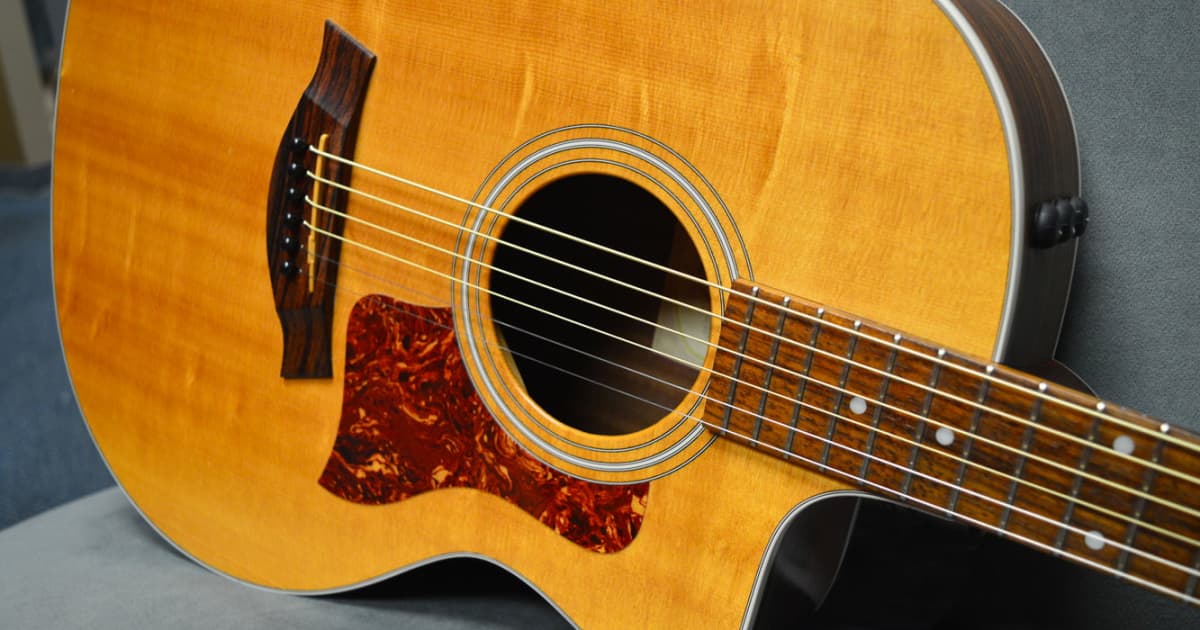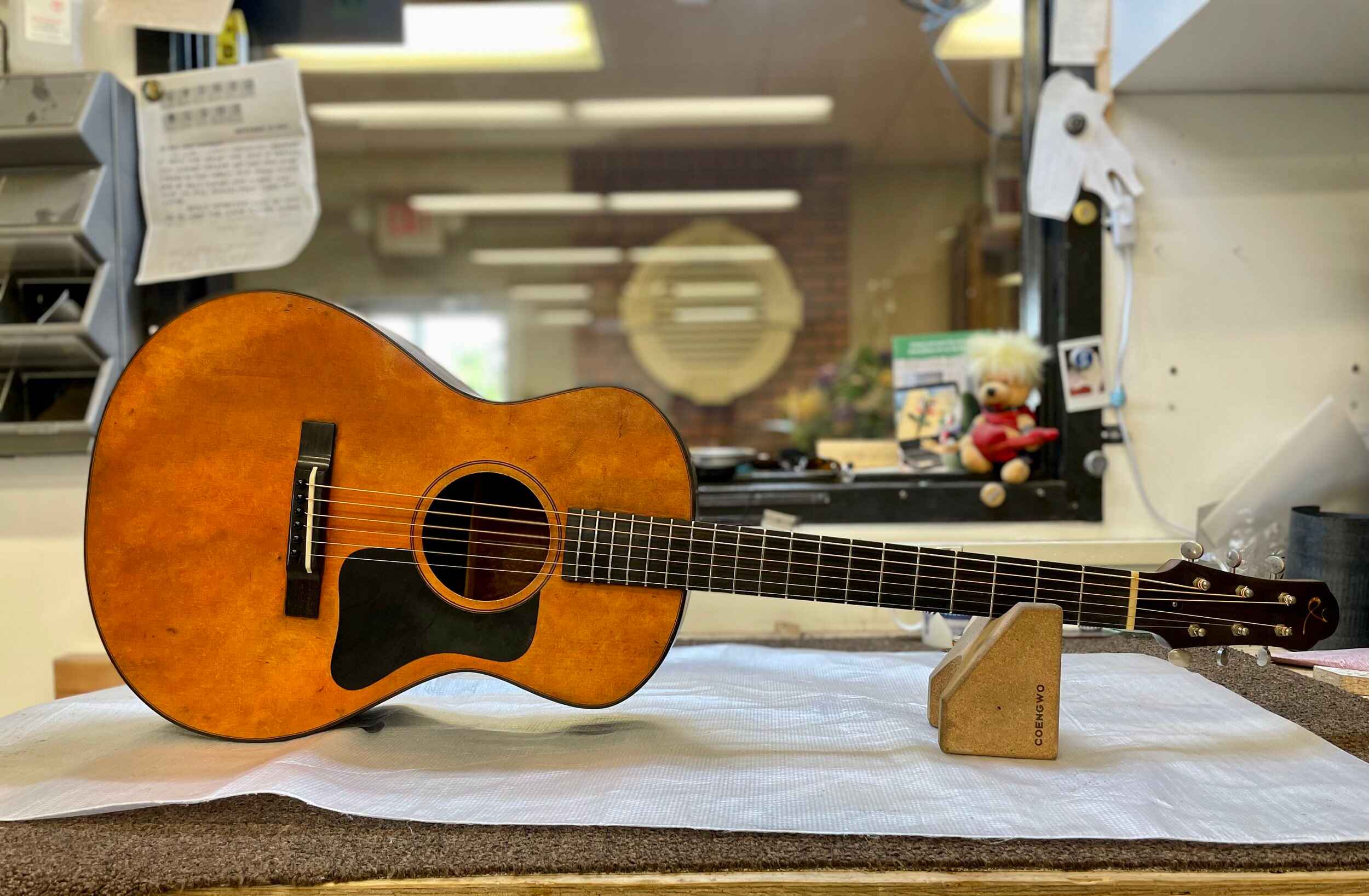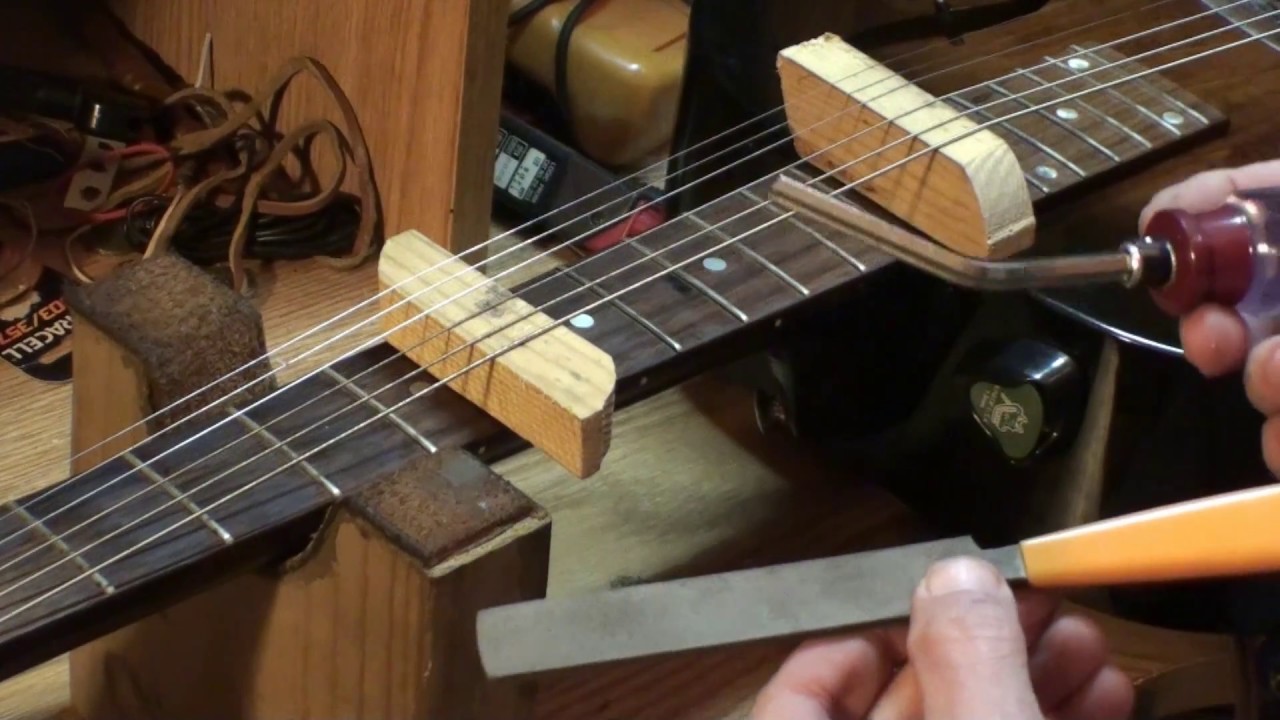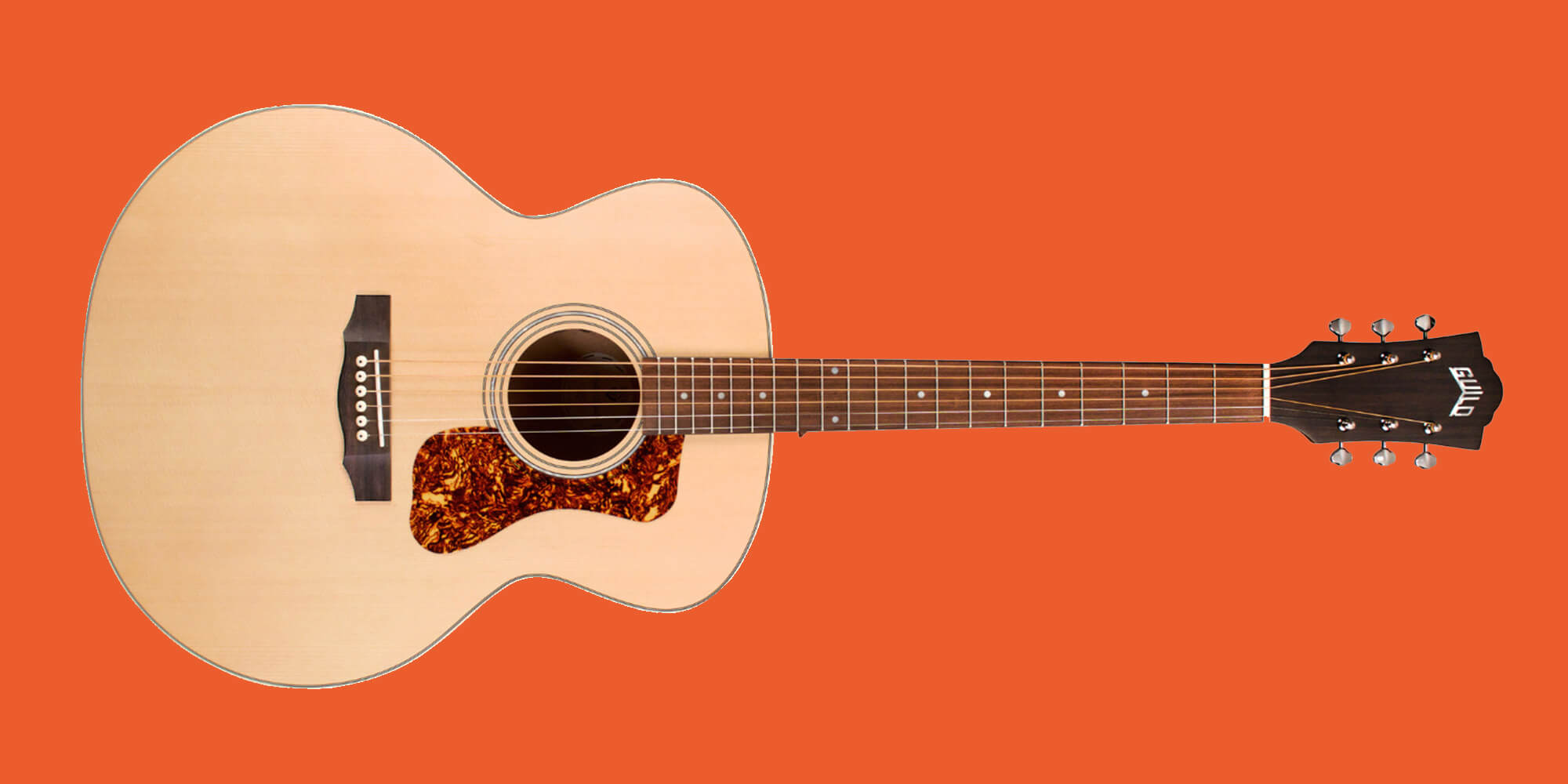Introduction
An acoustic guitar is not just a musical instrument; it is a work of art that can improve in tone, resonance, and appearance with age. Just like fine wine or a well-aged cheese, an aged acoustic guitar has a unique character and charm that distinguishes it from its younger counterparts. The process of aging an acoustic guitar involves various techniques and methods that intentionally speed up the aging process or allow it to occur naturally over time.
In this article, we will explore the concept of aging an acoustic guitar and the various methods used to achieve it. We will delve into the benefits of an aged instrument, the preparation required, and the different techniques that can be employed to expedite the aging process. Additionally, we will discuss how to care for an aged acoustic guitar to ensure its longevity and preserve its distinctive qualities.
Whether you are a seasoned player or a guitar enthusiast, understanding the art of aging an acoustic guitar can offer valuable insights into enhancing the instrument’s performance and aesthetics. So, let us embark on a journey to discover the secrets behind the captivating allure of a well-aged acoustic guitar.
What is Aging an Acoustic Guitar?
Aging an acoustic guitar refers to the intentional process of simulating the natural wear and tear that occurs over time on a guitar. It aims to recreate the tonal characteristics, resonance, and appearance of a vintage, well-played instrument. By aging an acoustic guitar, musicians and collectors can achieve a distinct and desirable sound that captures the essence and warmth of a classic instrument.
There are several factors that contribute to the aging process of an acoustic guitar. Firstly, the vibrations produced by playing the guitar repeatedly cause the wood to settle and resonate differently over time. This results in a development of a richer and more complex sound as the guitar matures. Additionally, exposure to air, moisture, and sunlight can gradually change the color and texture of the wood, giving it a beautiful patina.
When aging an acoustic guitar, there are different approaches and techniques that can be used. Some guitar makers opt for natural aging, allowing the instrument to evolve and age gracefully over time. This process can take many years but results in a truly authentic and unique instrument. On the other hand, there are accelerated aging methods that expedite the process, mimicking the effects of time through various treatments and modifications.
It is important to note that aging an acoustic guitar requires careful consideration and expertise. While it can enhance the instrument’s sound and appearance, improper aging techniques can damage or ruin the guitar altogether. It is essential to consult with professionals or experienced luthiers who have the knowledge and skill to navigate the aging process effectively.
Overall, aging an acoustic guitar is an art form that involves imitating the natural wear and tear that a guitar would undergo over years of use. It is not just about creating an antique-looking instrument; it is about achieving a depth of sound and character that can only come with time. The next section will explore the benefits of aging an acoustic guitar and why it is highly sought after by musicians and collectors alike.
Benefits of Aging an Acoustic Guitar
Aged acoustic guitars have become highly prized and sought after by musicians for several reasons. The process of aging can enhance the instrument’s sound, playability, and overall aesthetic appeal. Let’s explore some of the key benefits of aging an acoustic guitar:
- Improved Tone: One of the most significant benefits of aging is the improvement in the guitar’s tone. As the wood ages, it becomes more resonant and responsive, producing a richer and more well-rounded sound. The aging process allows the guitar to develop a depth and complexity in its tone that cannot be replicated by newer instruments.
- Enhanced Playability: Aged acoustic guitars often have a smoother and more comfortable feel when played. The accumulated wear and tear on the instrument, along with the settling of the wood, can result in a more ergonomic and responsive playing experience. Seasoned players appreciate the ease of playing that comes with an aged guitar.
- Unique Character: Aged acoustic guitars possess a unique character and personality that sets them apart. The natural wear and patina on the wood, as well as any physical alterations made during the aging process, contribute to the instrument’s distinct appearance. This uniqueness adds to the allure and collectability of aged guitars.
- Increased Resale Value: Vintage and aged guitars are highly sought after by collectors and enthusiasts, making them valuable assets. As the guitar ages, its value typically appreciates, making it a sound investment for those looking to buy or sell vintage instruments.
- Artistic Expression: Aging an acoustic guitar is a way for both luthiers and musicians to exercise their artistic expression. It allows them to create instruments that capture the essence and nostalgia of classic guitars while incorporating their own unique touch. The process of aging can be seen as a form of craftsmanship and creativity in the world of guitar making.
The benefits of aging an acoustic guitar go beyond mere aesthetics. Aged instruments offer a new dimension to the music that is played on them, enriching the overall experience for both the musician and the listener. In the next sections, we will explore the various methods and techniques used to age an acoustic guitar, from natural aging to accelerated aging and specialized playing techniques.
Preparing for Aging
Before embarking on the journey of aging an acoustic guitar, proper preparation is crucial to ensure the best possible outcome. Here are some important steps to take when preparing to age a guitar:
- Selecting the Right Guitar: Not all acoustic guitars are suitable for aging. It is important to choose a guitar with a solid wood construction, as opposed to laminate or other composite materials. Solid wood guitars have the potential to develop a richer and more resonant sound as they age.
- Assessing the Guitar’s Condition: Before starting the aging process, it is essential to assess the guitar’s current condition. Inspect the instrument for any structural issues or damage that may need to be repaired before aging. Addressing these concerns beforehand will prevent further damage during the aging process.
- Consulting a Luthier: Seeking the advice and guidance of a professional luthier is highly recommended when preparing to age an acoustic guitar. A luthier can offer expert insights, help identify any potential issues or limitations, and provide guidance on the best methods and techniques for aging the specific instrument.
- Documenting the Guitar’s Original State: Before making any modifications or aging treatments, it is crucial to document the guitar’s original state. Take detailed photographs of the instrument from various angles and note any distinguishing features. This documentation will serve as a reference point and can be valuable for future appraisal or restoration purposes.
- Setting Realistic Expectations: It is important to have realistic expectations when aging an acoustic guitar. While the aging process can improve the sound and appearance of the instrument, it will not miraculously transform a mediocre guitar into a vintage masterpiece. Understanding the limitations and potential outcomes is key to a successful aging process.
Properly preparing for aging helps ensure that the process is carried out smoothly and without causing any unnecessary damage to the guitar. By selecting the right guitar, addressing any existing issues, seeking professional guidance, documenting the original state, and setting realistic expectations, you can embark on the aging process with confidence. In the following sections, we will explore various methods and techniques for aging an acoustic guitar, ranging from natural aging to accelerated aging methods and specialized playing techniques.
Method 1: Natural Aging
Natural aging is the most patient and organic way to age an acoustic guitar. This method relies on the passage of time and regular use to allow the instrument to develop its unique tonal qualities and physical characteristics. Here are some key aspects of natural aging:
Regular Playing: Playing the guitar regularly is essential for natural aging. The vibrations produced by strumming and picking the strings cause the wood to vibrate and resonate, gradually improving the instrument’s tone. As the wood settles and adjusts over time, the sound becomes more mature and nuanced.
Proper Storage: Proper storage is important to protect the guitar from extreme temperature and humidity changes. A stable environment helps the instrument age naturally without the risk of warping or cracking. Keep the guitar in a case or a controlled room with a suitable humidifier to maintain optimal conditions.
Exposure to Air and Light: Allowing the guitar to breathe and exposing it to natural air and light can aid in the aging process. Avoid keeping the guitar in a sealed case for extended periods, as it can impede the natural aging of the wood. Regular exposure to air helps the wood breathe and develop its desired tonal qualities.
Patience: It is important to exercise patience when aging a guitar naturally. Natural aging can take many years, and expecting dramatic changes overnight is unrealistic. Embrace the journey and appreciate the subtle improvements in the instrument’s sound and appearance over time.
Maintenance and Care: Proper maintenance and care are essential to ensure the longevity and well-being of the guitar during the aging process. Regularly clean and condition the wood, keep the frets clean, and periodically check for any structural issues that may need to be addressed.
Natural aging is a gradual and authentic process that allows the guitar to develop unique characteristics and a vintage-inspired tone. While it requires patience and dedication, the results can be remarkably rewarding. However, if you are looking for a quicker aging process, or if you want to expedite the development of specific tonal qualities, you may consider exploring accelerated aging methods, which we will discuss in the following section.
Method 2: Accelerated Aging
For those seeking a faster approach to aging an acoustic guitar, accelerated aging methods can be employed to expedite the natural aging process. These techniques mimic the effects of time and use, allowing the guitar to develop a vintage-like tone and appearance more rapidly. Here are some key methods used for accelerated aging:
Thermal Cycling: Thermal cycling involves subjecting the guitar to controlled temperature fluctuations. By exposing the instrument to alternating hot and cold temperatures, the wood expands and contracts, simulating the effects of aging over an extended period of time. This process can help develop a more resonant and mature sound.
Artificial Wear and Tear: Creating artificial wear and tear on the guitar can give it the appearance of a well-aged instrument. Techniques such as relic-ing, where deliberate scratches, dings, and finish wear are added, can give the guitar a vintage aesthetic. However, it is important to note that these cosmetic modifications should be done with care and precision to avoid compromising the structural integrity of the instrument.
Chemical Aging: Chemical aging techniques involve the application of specific solutions or treatments to the wood to accelerate the aging process. Substances such as tannins or dyes can be used to darken the wood, giving it a more aged appearance. However, caution must be exercised when using chemicals, as their application should be done carefully and with proper knowledge to avoid damaging the guitar.
Pre-aged Components: Another method of accelerated aging involves using pre-aged components, such as aged hardware or distressed finishes, during the construction or modification of the guitar. These components emulate the visual and sonic characteristics of a vintage instrument, providing an instant aged appearance and tone.
Specialized Aging Techniques: Some luthiers and guitar makers may have their own specialized techniques and processes for accelerated aging. These methods can involve combinations of physical alterations, finishes, vibrations, or precise shaping to mimic the natural aging process. These techniques are often a result of years of experience and experimentation.
Accelerated aging methods can be effective in achieving desired tonal qualities and aesthetics more quickly than natural aging. However, it is crucial to exercise caution and seek guidance from experienced professionals to ensure that the guitar’s structural integrity is not compromised during the process. While accelerated aging can produce impressive results, it is important to note that the authenticity and character of naturally aged guitars may still differ from those aged through accelerated methods.
Method 3: Playing Techniques for Aging
Playing techniques for aging an acoustic guitar involve specific approaches and practices that aim to simulate the effects of regular use and wear on the instrument. By employing these techniques, musicians can expedite the aging process and encourage the guitar’s tonal development. Here are some playing techniques commonly used for aging:
Frequent Playing: Just as natural aging requires regular playing, frequent and prolonged playing sessions can speed up the aging process. The constant vibrations from strumming, picking, and fretting the strings promote the movement of the wood and the development of a more mature sound.
Varied Playing Styles: Experimenting with different playing styles can help accelerate the aging process. Techniques like heavy strumming, aggressive picking, and vigorous bending can put more stress on the wood, encouraging its responsiveness and tonal transformation.
Open Tunings: Using open tunings, where the guitar is tuned to a chord or open notes, can alter the tension on the strings and the overall resonance of the instrument. This can result in unique tonal qualities and promote the aging process by exposing the guitar to different tensions and vibrations.
String Choice: The choice of strings can impact the aging process. Opting for strings that offer a warmer and richer tonal response, such as phosphor bronze or silk and steel strings, can enhance the aging characteristics of the guitar and expedite tonal development.
Extended Play Sessions: Longer play sessions can further accelerate the aging process. Extended periods of playing allow the guitar to experience continuous vibrations and fluctuations in temperature and humidity, promoting the wood’s settling process and tonal refinement.
Dynamic Range: Incorporating a wide dynamic range in your playing, from soft and delicate to bold and forceful, can help age the guitar more effectively. This variation in playing dynamics puts different stresses on the top, back, and sides of the guitar, encouraging tonal complexity and responsiveness.
It is important to note that while these playing techniques can expedite the aging process, it is essential to strike a balance and not overexert the instrument. Improper and excessive playing techniques can potentially damage or strain the guitar, so it is advisable to consult with professionals or experienced players to ensure the instrument’s well-being.
By incorporating these playing techniques into your practice routines and performances, you can contribute to the aging process of an acoustic guitar, unlocking its potential for a more mature and resonant tone.
Method 4: Physical Alterations for Aging
Physical alterations are another method used to age an acoustic guitar, where specific modifications are made to the instrument to mimic the natural wear and tear that occurs over time. These alterations can enhance the guitar’s vintage aesthetic and even influence its tonal characteristics. Here are some common physical alterations used for aging:
Hardware Aging: Aging the hardware components of the guitar, such as the tuners, nuts, and bridges, can contribute to the vintage appearance. Techniques like using vintage-style hardware or applying an artificial aging process, such as oxidization or distressing, can give the instrument an authentic, aged look.
Finish Distressing: Distressing the guitar’s finish can create the appearance of aging and impart character to the instrument. Methods like relic-ing, which involves carefully adding scratches, wear marks, and checking patterns to the guitar’s finish, can simulate the effects of decades of use.
Neck Aging: Aging the neck of the guitar can affect both its appearance and feel. Techniques like using a relic-ed finish on the neck or carefully sanding down the back of the neck to create a worn-in texture can give the guitar a played-in and comfortable feel, reminiscent of a well-aged instrument.
Bridge Modification: Modifying the bridge of the guitar can influence its tonal response and aging characteristics. Techniques like sanding or scalloping the bridge can alter the way the strings vibrate and interact with the body, potentially enhancing the guitar’s resonance and tonal complexity.
Top Thinning: Thinning the top of the guitar, especially around the soundhole and bracing areas, can simulate the subtle sinking and flattening that occurs naturally with time and playing. This alteration can contribute to the development of a more mature and responsive sound in a relatively shorter period.
Binding Aging: Aging the binding on the body of the guitar can add to its vintage appeal. Techniques like tinting or lightly buffing the binding can create a slightly yellowed or faded appearance, reminiscent of aged instruments.
It is important to approach physical alterations with caution and seek the help of experienced luthiers or professionals who specialize in guitar aging. Improper modifications can potentially compromise the structural integrity or playability of the instrument.
Physical alterations for aging an acoustic guitar can add to its character and give it a well-worn and vintage appearance. These modifications, when done skillfully and in moderation, can contribute to the overall aesthetic appeal and even influence the instrument’s tonal qualities.
Caring for an Aged Acoustic Guitar
Once an acoustic guitar has been aged and achieved the desired characteristics, it is crucial to provide proper care to preserve its unique qualities and ensure its longevity. Here are some essential tips for caring for an aged acoustic guitar:
Regular Cleaning: Regularly clean the instrument to remove dust, dirt, and oils that can accumulate over time. Use a soft, lint-free cloth to gently wipe the body, neck, and strings. Avoid using harsh chemicals or abrasive cleaners that could damage the finish.
Humidity Control: Maintain a stable humidity level to prevent wood-related issues. Use a humidifier to prevent the wood from drying out in low humidity environments, and a dehumidifier or moisture absorber to protect the guitar from excessive moisture in high humidity areas.
Proper Storage: Store the aged acoustic guitar in a suitable climate-controlled environment when not in use. Use a hardshell case or a guitar stand that offers proper support to prevent accidental damage or exposure to temperature fluctuations.
String Care: Replace the strings regularly to maintain optimal sound quality and playability. Wipe down the strings after each use to remove sweat and oil residue, which can cause them to deteriorate faster. Consider using coated or treated strings to increase their lifespan.
Protecting the Finish: Protect the guitar’s finish from scratches and dings by using a padded strap and being mindful of your playing environment. Consider using a pickguard to guard against pick scratches near the soundhole area, especially for guitars with delicate finishes.
Adjustments and Maintenance: Periodically have a professional luthier assess and perform any necessary adjustments, such as truss rod adjustments, fret leveling, and bridge adjustments. Regular maintenance ensures that the guitar remains in optimal playing condition and minimizes the risk of structural issues.
Avoid Extreme Conditions: Keep the guitar away from extreme temperature and humidity conditions, as they can cause wood expansion, warping, and cracking. Avoid subjecting the instrument to direct sunlight, extreme cold, or excessive heat.
Play with Care: While aged guitars are meant to be played and enjoyed, it’s important to exercise caution to avoid accidental damage. Be mindful of the guitar’s fragility and handle it with care, especially when performing intricate techniques or transporting it.
By following these care tips, you can maintain the beauty, playability, and tonal qualities of an aged acoustic guitar. Proper care prolongs the life of the instrument, ensuring that it continues to bring joy and inspiration for years to come.
Conclusion
Aging an acoustic guitar is a fascinating process that allows musicians and collectors to unlock the full potential of their instruments. Whether through natural aging, accelerated aging methods, playing techniques, or physical alterations, the goal remains the same: to achieve a vintage-inspired tone, enhanced playability, and a distinct aesthetic appeal.
While natural aging takes time and patience, it results in an instrument with unique tonal qualities and a timeless beauty that can only come with years of use. On the other hand, accelerated aging techniques offer a faster route to achieving some of those sought-after characteristics, albeit with careful attention to preserving the guitar’s structural integrity.
Playing techniques and physical alterations serve as additional tools to expedite the aging process and contribute to the overall character of the instrument. Experimenting with different playing styles, modifying the hardware or finish, and taking care of an aged guitar are all key factors in maintaining its authenticity and ensuring its longevity.
Whether you are a professional musician, a guitar enthusiast, or an aspiring collector, understanding the art of aging an acoustic guitar can bring a new level of appreciation to the instrument. The aged guitar embodies a rich history, timeless craftsmanship, and a soulful voice that only time can bestow.
Remember, proper care and maintenance are vital to preserve the condition and value of an aged guitar. Regular cleaning, humidity control, string care, and professional adjustments are essential to ensure the instrument’s continued performance and longevity.
So, whether you choose to pursue natural aging, opt for accelerated aging methods, explore playing techniques, or consider physical alterations, may your journey of aging an acoustic guitar be a rewarding and enriching experience. Embrace the unique character and tonal transformation that an aged instrument offers, and let the timeless beauty of music resonate through your well-loved and aged guitar.







